INDIAN ARMED FORCES CHIEFS ON
OUR RELENTLESS AND FOCUSED PUBLISHING EFFORTS

SP Guide Publications puts forth a well compiled articulation of issues, pursuits and accomplishments of the Indian Army, over the years

I am confident that SP Guide Publications would continue to inform, inspire and influence.

My compliments to SP Guide Publications for informative and credible reportage on contemporary aerospace issues over the past six decades.
Chinese Naval Presence - A Threat to Indian Ocean Region?
"PLA Navy's activities are minutely monitored by Indian Navy and our belief is that the responsibility of protecting Indian Ocean and our coastline lies with the Navy. Our ships and aircraft are always on alert so that this responsibility is carried out well." Admiral RK Dhowan, Chief of the Naval Staff.
By Rear Admiral Sushil Ramsay (Retd.)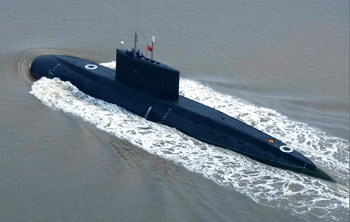
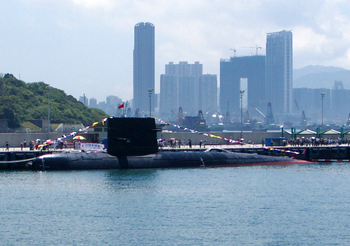
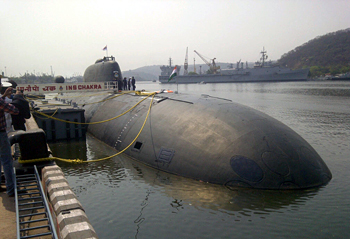
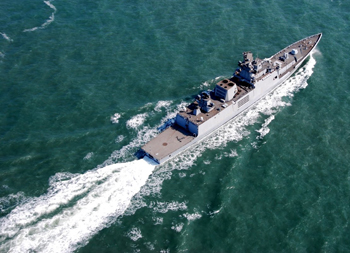
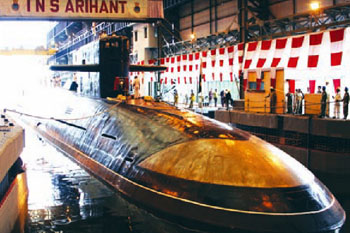
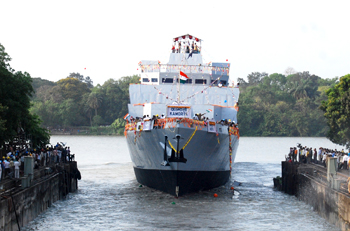
Photo Credit: Wikipedia, Indian Navy, DPR Defence
One Sunday morning in December 2013, China's defence ministry summoned military attachés from several embassies to its Beijing headquarters and surprised them with announcement that one of PLA (Navy) nuclear-powered submarines would soon pass through the Strait of Malacca, a passage between Malaysia and Indonesia that carries much of world trade.
Shortly thereafter a hunter-killer nuclear submarine crossed Malacca Strait on surface and dived thereafter. She surfaced near Sri Lanka to proceed to the Persian Gulf, supposedly on an anti-piracy mission before returning in February 2014. This was the first reported presence of a Chinese submarine in the Indian Ocean Region (IOR). China had thus fulfilled its long cherished dream to join the elite club of countries with nuclear submarines capable to be deployed on sustained missions in IOR.
| While China would want to justify its submarine presence in the region in the context of anti-piracy missions, submarines definitely are not capable of chasing fast moving crafts employed for the piracy which invariably operate and whisk away in shallow waters. |
The Chinese defence ministry summoned the foreign defence attachés yet again to announce another Chinese deployment to the IOR in September 2014, this time a Song class diesel-electric conventional submarine which stopped off in Sri Lanka. Chinese submarine entering the Chinese owned Container terminal in Colombo stirred up hornets' nest in India, as Sri Lanka failed to honour security pact between the two countries by allowing Chinese submarine to enter Colombo.
Reports have now emerged of a Chinese nuclear powered attack submarine in the IOR in the last few months. This deployment has to be viewed as a carefully choreographed exercise to assert presence of PLA (Navy) nuclear powered submarines in the IOR on a regular basis. While China would want to justify its submarine presence in the region in the context of anti-piracy missions, submarines definitely are not capable of chasing fast moving crafts employed for the piracy which invariably operate and whisk away in shallow waters. Hence, the China's assertion on submarine deployment in the aid of anti-piracy mission off the coast of Somalia is to be taken with a handful of salt.
"Navy Sources have told NDTV that while no Chinese nuclear submarine has been actively tracked trying to probe India's territorial waters, there is a recognition that a great game of submarine subterfuge, a feature of the Cold War, may now be breaking out in the Indian Ocean".An increasing number of Chinese submarines venturing into the IOR pose a grave danger to India's security interests, a classified defence ministry document has reportedly revealed.
China's new Type 093 Shang class fast attack nuclear submarine, at least six of which have reportedly been built are considered eminently suited for deployment in IOR. The endurance of the Shang class submarine which was reportedly positioned for three months in the Indian Ocean is indeed very impressive and hence Indian Navy (IN) has to exercise constant vigil not just in its own areas of interest but also keep surveillance devices active in the entire region.
| The Gwadar port, seen as the latest example of China's 'String of Pearls' — strategic attempts to surround India with facilities that can be upgraded to naval bases — also has the Indian Navy worried. |
To counter the emerging threat scenario within IOR and the growing eminence of Chinese sub-surface fleet, IN's own sub-surface fleet has to remain in perfect operational trim. Indeed, the inordinate and unacceptable delays in pursuing the 1999 Cabinet Committee on Security approved 30-year Submarine Building Plan makes a sad commentary. However, under partial implementation of the same all of nine remaining Kilo Class conventional submarines have been modernised with Russian Klub anti-ship and land-attack missiles and the indigenously designed and developed USHUS sonar. Likewise, four German-designed HDW-1500 submarines have all been upgraded with the Atlas-Elektronik CSU-9014 sonar and ISUS-90 weapon control system and are in the process of being integrated with US supplied Boeing Harpoon anti-ship missiles.
The build component of the 30-year submarine building programme includes P75 Scorpene Class six of which are under construction at Mazagon Dock Ltd. (MDL). The first Boat is expected to join by September 2016 and the balance submarines to join one each at an interval of nine months. P75I which is part of the Phase I of the plan has been delayed by nearly a decade and has now been categorised as Make in India. Tenders for six submarines to be indigenously constructed are expected to be released shortly.
Making a mid-course correction the Government has tweaked the Phase II of the Plan to now include six nuclear powered submarines to be built at the Ship Building Centre, Visakhapatnam. This will be in addition to and the follow-on of the ongoing programme of Arihant Class (3+2) nuclear powered fast attack submarines. New submarines will have a profile of SSN and be heavier than Arihant class and developed on the design of Akula II (Chakra) technology. After completion of Arihant class SSBN, five next generation SSBN class will be developed which will be double the size of Arihant class. Of course, all of these are part of the futuristic submarine force development plan, spanning over the next 20 years.
On the surface front, India continues to maintain a robust naval presence in South Asia where it is engaged in several bilateral and multilateral engagements, as part of the India's 'Look East' and 'Act East' policy. Currently ships Eastern Fleet commanded by Rear Admiral AB Singh are on an operational deployment in Southeast Asia and the Southern Indian Ocean. The ships, including the stealth frigate INS Satpura, the anti-submarine corvette INS Kamorta, the guided missile destroyer INS Ranvir and the fleet tanker INS Shakti have visited Singapore and Jakarta. Some of the ships will also be making port calls to Freemantle (Australia), Kuantan (Malaysia), Sattahip (Thailand) and Sihanoukville in Cambodia.
The document, titled 'Indian Navy: Perceived Threats to Subsurface Deterrent Capability and Preparedness', has been prepared by the Integrated Defence Staff whose mandate includes advising the Government on developing force levels and capabilities. It predicts intense rivalry between the two navies in the next three years as China ramps up its strategic manoeuvres.
The Gwadar port, seen as the latest example of China's 'String of Pearls' — strategic attempts to surround India with facilities that can be upgraded to naval bases — also has the IN worried. The port, located in southwest Pakistan, is operated by China.
The Chinese navy's "extended patrols may fully overlap with the IN's area of operation," the document said. The IOR stretches from the Horn of Africa to the Malacca Strait and southwards to the western shores of Australia.
It also cautions against the Chinese Navy building up "expeditionary maritime capabilities" in the form of nuclear-powered submarines and area denial weapons (anti-ship ballistic missiles) "with deployment focus in the IOR".
The document warned that the Gwadar port would "facilitate enormous command and control capability for prospective Chinese presence in the IOR".
China has set up a network of ports/facilities in Bangladesh (Chittagong), Myanmar (Sittwe and Coco Island), Sri Lanka (Hambantota), Pakistan (Gwadar) and has also secured docking rights in Seychelles, in what some describe as the culmination of the 'String-of-Pearls' strategy.
Experts, however, think the strategy is overrated and will not dilute India's influence in the region.
"Converting a port or token port facilities into a naval base is a huge leap. I don't think China can do that," said strategic affairs expert Rear Admiral Raja Menon (Retd.). "Also, any country that allows China to do that will risk India's enmity."
Similarly, defence analyst Commodore Uday Bhaskar (Retd.) said, "The suggestion that China is strangulating India with a 'String of Pearls' is an exaggeration."
Speaking on the last day of recently concluded Commanders' Conference Admiral RK Dhowan, Chief of the Naval Staff said, "PLA Navy's activities are minutely monitored by Indian Navy and our belief is that the responsibility of protecting Indian Ocean and our coastline lies with the Navy. Our ships and aircraft are always on alert so that this responsibility is carried out well."





